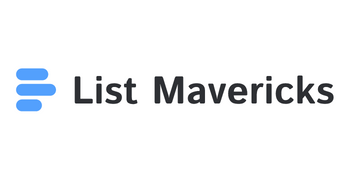Growing a business or launching a new product can feel confusing without the right plan. Go-to-market consulting helps companies create and follow a clear strategy to reach the right customers and stand out in a competitive market. By working with experts in this field, businesses tap into proven methods for sales, marketing, pricing, and customer engagement that fit their unique goals.
Skilled consultants help organizations analyze each step of launching or expanding into a market. They can offer tailored advice and practical solutions, such as how to build a strong sales team or how to adjust a product’s position for better results. Many companies see faster growth and less wasted effort by partnering with experienced advisors, as shown by top consulting firms like Bain & Company and Boston Consulting Group.
A well-designed go-to-market strategy can make the difference between struggling to find customers and achieving real business success. With the right help, businesses can avoid mistakes and find the best path to growth.
Key Takeaways
- Go-to-market consulting sets a clear plan for launching products or services.
- Expert advice guides strategy, channels, and customer engagement.
- Data-driven insights support stronger, faster market results.
Understanding Go-To-Market Consulting

Go-to-market consulting helps companies plan and execute product launches, reach the right customers, and boost revenue. Its approach is rooted in strategic analysis, teamwork, and practical actions that fit a business’s goals and market needs.
Core Principles of Go-To-Market Consulting
Go-to-market consulting is built on a few main ideas. First, it focuses on understanding the target market, including key customer segments and what drives their decisions. Consultants study competitors, pricing trends, and product fit to make sure a launch plan is realistic and competitive.
Second, the process is data-driven. Decisions are based on market analysis, sales data, and feedback, not guesses. This helps businesses reduce risk and get faster results. Consultants also work with organizations to make sure the business has the right team and tools in place.
Finally, consulting firms like Boston Consulting Group or Bain often use proven frameworks for planning. These include clear steps, set goals, and timelines. The process is structured but flexible, allowing businesses to adapt as needed when facing real-world changes. Go-to-market consulting firms often take an outside look at the business, giving honest feedback based on experience.
The Role of Go-To-Market Consultants
Go-to-market consultants help companies figure out how to get products or services to the right customers quickly and efficiently. They build strategies for sales, marketing, and distribution. Their job often starts with identifying the company’s main business goals, like growing revenue, gaining market share, or entering a new market.
Consultants use their knowledge to spot weaknesses and uncover new opportunities. They bring outside experience from working with many industries and help set priorities for where to invest time or money.
Some of their main tasks include:
- Mapping out customer journeys
- Improving value propositions
- Finding the best sales channels
- Setting price points
- Training teams to deliver better results
By working closely with the client’s team, consultants also guide leaders in making better decisions and managing change during launches. Strategy consulting firms are crucial for making these projects work well.
Types of Consulting Engagements
Go-to-market consulting projects come in different shapes and sizes. Some companies want help building a full go-to-market strategy from scratch, while others need support to fix specific problems, such as low sales or poor customer engagement.
The most common types of engagements are:
- End-to-end strategy design: Consultants create a full go-to-market plan, covering everything from product positioning to sales tactics.
- Market entry or expansion: Businesses get help entering new markets or launching new products, including analysis of local competition and customer needs.
- Process improvement: Consultants review current sales or marketing processes to find ways to get better results.
Large strategy consulting companies, including Boston Consulting Group, are often hired for complex or global projects. Smaller consulting firms may focus on local or industry-specific work. The choice depends on business goals, budget, and the complexity of the organization. These projects can run from a few weeks to many months, depending on the client’s needs.
Strategic Planning and Market Assessment

Effective go to market consulting depends on a clear understanding of market conditions, customer segments, and competition. Strategic decisions start with strong data and end with practical plans that reduce risk and maximize opportunities.
Market Research and Analytics
Market research allows businesses to collect information about industry trends, customer behaviors, and sales patterns. Quality analytics turn this raw data into actionable insights, supporting choices on product features, pricing, and sales channels.
Tools such as surveys, focus groups, and social media listening reveal shifts in buying habits or unmet needs. Tracking metrics like growth rates or demographic changes helps teams understand where demand is rising or falling.
Data analytics can highlight which products customers like most and which segments generate the highest profit. This approach makes it easier to spot emerging opportunities or threats. Using technology for research drives more accurate forecasts and helps companies invest in the right markets.
Target Market Identification
Identifying the target market is crucial for any go to market strategy. Consultants map out customer segments by looking at factors like age, location, income, preferences, and how people make buying decisions.
The process also includes defining the size and potential value of each segment. Data from market research is used to profile these groups, making it clear who is most likely to buy and what drives their choices.
Questions such as “Who needs this product?” and “How does this audience prefer to buy?” guide the investigation. This targeted approach allows businesses to focus marketing and sales efforts for higher conversion rates and lower customer acquisition costs.
Competitive Landscape Evaluation
A thorough competitive landscape evaluation reviews who the main competitors are, what they offer, and how much market share they control. Consultants analyze both direct rivals and indirect substitutes, comparing features, prices, distribution, service, and brand reputation.
Understanding competitors’ strengths and weaknesses helps companies position themselves correctly in the market. They may discover an opening focused on unique features, improved service, or better pricing.
This analysis can involve a table comparing products, a list of competitor strategies, or a review of recent market moves. Companies also track market dynamics to spot changes in leadership or response to market trends. Detailed evaluation can reveal white spaces or market gaps to target for growth. Tools and frameworks from consulting firms like BCG help structure this process.
Market Entry Strategies
Designing a market entry strategy involves choosing how to introduce products or services to a new market. Possible approaches include direct sales, channel partnerships, franchising, or online platforms.
Consultants review potential barriers like regulations, local preferences, or established competitors. They assess whether a gradual launch or a rapid full-scale entry fits the company’s resources and goals. Risk assessment is key, considering things like cost, speed to market, and potential for success.
The strategy may use a mix of both online and offline channels, tailored for local market needs. Insights from customer segmentation and competitor analysis feed into decisions about where and how to launch, taking advantage of the most promising market opportunities. More details and best practices can be found through go-to-market strategy leaders such as Bain & Company and L.E.K. Consulting.
Developing and Executing Go-To-Market Strategies

Building a strong go-to-market strategy requires understanding what customers need, creating the right message, and planning each step carefully. By blending research, planning, and execution, businesses can better reach their target market and achieve growth.
Customer Segmentation and Value Proposition
Segmenting customers starts with grouping buyers based on needs, behaviors, or demographics. This step helps companies focus their efforts where they matter most and design offers that connect with each group. Data from sales, market research, and customer feedback all play an important role in this process.
A unique value proposition is then crafted for each segment. This statement answers why a buyer should choose one business over another. Successful companies align their value proposition to specific pain points or goals that matter to their target customers.
Key steps in customer segmentation and value development:
- Analyze market data and trends
- Create detailed customer personas
- Match solutions to segment-specific challenges
This approach allows for personalized communication and better resource allocation. Firms like Bain & Company stress the impact of customer-focused strategies on results.
Positioning and Messaging
Positioning defines how a brand or product is seen in the market against rivals. It focuses on unique strengths, whether it’s price, quality, speed, or service. Good positioning highlights what sets the business apart and why that matters to customers.
Messaging puts this position into simple, clear language for the target market. The right words help customers quickly understand what a company offers and why it fits their needs. This includes taglines, website copy, and sales pitches.
Companies revisit their positioning and messaging during each product launch or market shift. Consistency across all channels is key, ensuring every customer touchpoint supports the chosen position.
Go-To-Market Planning
Planning a go-to-market strategy means setting practical steps to take a product or service from idea to market success. The planning stage covers sales models, marketing channels, and timelines. Firms may choose between direct sales, digital campaigns, or partnerships depending on their market and strengths.
Important parts of a GTM strategy include:
- Clear goals and KPIs
- Defined budget and resources
- Teams responsible for each action
- A timeline for execution
Tools and frameworks used by firms such as L.E.K. Consulting help businesses create a roadmap that matches their objectives. Regular reviews of this plan keep efforts on track as conditions change.
Actionable Strategies for Sustainable Growth
Sustainable growth comes from repeating actions that deliver steady results, not just one-time wins. Companies focus on scalable efforts, such as building partnerships, expanding distribution, and improving customer retention. They track performance and adjust strategies based on what works.
Tips for sustainable success:
- Invest in ongoing training for sales and support teams
- Use data analytics to monitor results and spot trends
- Adapt GTM tactics as markets and customer needs evolve
- Stay close to customers to anticipate changing expectations
Experts like Pepper Foster Consulting highlight the value of building flexible processes. This helps businesses not only grow, but also stay competitive over time.
Channel Strategy and Customer Engagement

A strong channel strategy helps businesses reach customers through the right mix of sales, distribution, and digital channels. Effective engagement aligns these channels with brand identity and enhances the overall customer experience.
Channel Selection and Optimization
Choosing the best mix of channels is key for reaching target audiences. Companies often use a matrix to compare each channel’s strengths and weaknesses across areas like reach, cost, and customer fit.
Direct channels like inside sales teams allow more control over the customer journey. Indirect channels, such as partners or wholesalers, add scale for new markets. Evaluating data on customer preferences and market trends supports these choices.
Optimization means improving performance by reallocating resources or dropping underperforming channels. Businesses use analytics, customer feedback, and benchmarking to refine their approach. This helps brands stand out in a crowded field and improves lead generation, as outlined in channel-focused go-to-market strategy consulting.
Sales and Distribution Channels
Sales and distribution channels connect the product or service to the end customer. Companies often balance multiple channels, such as in-person sales reps, e-commerce platforms, and retail distributors.
For complex or high-value sales, companies may rely on field sales teams to manage relationships and tailor the customer experience. For high-volume, transactional sales, they might use retail chains or digital marketplaces for wider reach.
To keep branding consistent across all sales channels, clear guidelines and regular training are used. Managing these channels effectively boosts visibility, drives conversions, and builds trust with each type of customer—whether B2B or B2C. Companies also need to consider fragmented and multi-layered networks, especially in emerging markets where channel structures can be complex, as explored by leading consultants.
Digital Marketing and Automation
Digital marketing uses online channels—like social media, search engines, and email—to engage and attract customers. Automation platforms help manage campaigns, improve targeting, and personalize communications for different segments.
Automated tools support lead generation through email drip campaigns, retargeting ads, and predictive analytics. These tactics nurture prospects at each step of the customer journey, making touchpoints more relevant.
Digital channels also strengthen brand identity by providing consistent messaging and design. Using dashboards and analytics, companies monitor digital campaigns in real time, adjusting tactics for better engagement and ROI. Consultants blend market data and automation tools to shape effective digital go-to-market strategies that drive measurable business growth.
Data-Driven Insights and Organizational Impact

Using data analytics and AI, organizations can uncover patterns in customer behavior, adjust systems quickly, and create a more responsive business environment. This leads to more accurate decision-making, better understanding of customer needs, and changes in how teams operate.
Data-Driven Decision-Making
Data-driven decision-making uses analytics and advanced AI tools to move away from relying on gut feeling or outdated information. Companies gather, process, and analyze large sets of data to spot trends and guide planning.
Well-organized systems help teams detect new sales opportunities or find weak points in their go-to-market strategy. Clear dashboards and reports make insights easy to understand for faster action. For example, a company may use real-time sales data to adjust its marketing message or shift resources.
Using reliable data checks and strong integration, the team can trust that decisions made will match what the market actually needs. This reduces costly mistakes, and helps organizations focus on what works.
Customer Behavior Analysis
Understanding customer behavior is vital for market success. By analyzing purchase history, click patterns, and interactions across all channels, companies can spot exactly what their customers want.
Data analytics tools help businesses learn about customer preferences and buying habits, making it easier to deliver personalization at scale. AI can automate segmenting customers into target groups, allowing for more specific messaging and better product offerings.
Organizations now use customer behavior analysis not just to react but to predict trends and adjust proactively. This leads to improved loyalty and maximized revenue by meeting customer needs quickly and accurately.
Impact on Organizational Structure
Greater access to insights and analytics leads companies to change the way they are organized. Departments share data more openly, breaking down traditional silos. Teams focused on sales, marketing, and customer service work closer together to deliver a seamless customer experience.
Focusing on agility, organizations create roles and systems that can adapt as new data appears. Decision-making becomes faster, and companies can pivot quickly in response to new trends. Sometimes, entirely new roles like data analysts or AI specialists are introduced to support this change.
A strong data infrastructure supports better integration and governance, making it easier for everyone to access the information they need. This foundation reduces errors, supports growth, and makes the organization more responsive to customer behavior and market shifts.
Key Considerations for Go-To-Market Success

Planning a go-to-market strategy requires more than a good product. It involves careful decisions around funding, pricing, timing, and responsible business practices to meet market needs and ensure long-term growth.
Investment and Resource Allocation
Securing the right amount of investment helps a company cover costs like staff, technology, and marketing. Decision-makers must decide how much funding to put into each area. This is especially important for B2B tech and SaaS companies, which often need larger budgets for product development and support teams.
Setting a budget requires honest estimates of expected sales and market size. A company can use a simple table to track spending:
| Area | Planned Spending | Actual Spending |
|---|---|---|
| Marketing | $200,000 | $180,000 |
| Product | $300,000 | $320,000 |
| Operations | $100,000 | $95,000 |
Allocating resources the right way increases the chance of reaching product-market fit. Regular review helps catch mistakes early and adjust as needed.
Pricing and Valuation
Setting prices is about more than covering costs. Well-chosen pricing can drive growth and create value for both the company and its customers. For SaaS, common pricing models include subscriptions, freemiums, and usage-based plans.
Valuation depends on the company’s pricing strength, growth potential, and positioning in the business landscape. Engaging with early adopters and gathering feedback on willingness to pay, especially in competitive markets, helps shape smart pricing.
Pricing also signals value. A price that is too low might send the wrong message about quality, while a very high price could prevent gaining traction. Strong market research and feedback loops improve both pricing and overall valuation.
Timing and Product Launch
Launching a product at the right time in the market can be the difference between success and failure. Decision-makers need to watch market trends, competitor moves, and technology changes.
A strong go-to-market plan covers:
- Market readiness checks
- Clear launch dates
- Pilot tests with a small group
- Rapid feedback and quick fixes
Proper timing also helps companies stand out from similar products and take advantage of industry momentum. For B2B tech and SaaS products, it is smart to launch when businesses are planning budgets or facing industry shifts. This approach can increase adoption rates and speed up growth.
Sustainability and Social Responsibility
Modern businesses can no longer ignore sustainability and social responsibility. Customers, partners, and even investors want to see companies address topics like environmental impact, fair pay across race and age groups, and ethical sourcing.
SaaS and B2B tech companies can take steps like:
- Offering inclusive hiring practices
- Reducing energy use in data centers
- Being transparent about data privacy
Meeting these standards not only strengthens a brand but can also boost growth potential and trust. Including these values in operations and go-to-market plans sets a business apart in a crowded landscape. For more on how these pillars affect growth planning, see the four key go-to-market pillars discussed by Magnetude Consulting.
Frequently Asked Questions

A go-to-market strategy depends on strong planning, measurable goals, and experienced advisors. The right framework can help companies reach new markets, track progress, and boost revenue through real-world examples.
What are the core components of a successful go-to-market strategy?
A strong strategy focuses on defining the target customer, value proposition, and key channels for reaching buyers. Other important pieces include sales tactics, pricing decisions, and clear messaging. Companies should also decide on key partners and measure customer needs to guide product and marketing choices. Get more insights on go-to-market consulting strategies.
How do I measure the effectiveness of a go-to-market strategy?
Leaders track progress using clear metrics. These often include sales growth, number of new customers, revenue from new products, and market share. Feedback from customers and win rates against competitors also matter. Reviewing these metrics helps teams make adjustments when needed.
What is the typical salary range for a go-to-market consultant?
In the United States, go-to-market consultants usually earn between $80,000 and $160,000 a year, depending on experience and company size. Senior consultants at large firms may earn more, sometimes adding bonuses or profit sharing to their base pay.
In what ways can a go-to-market framework benefit my business?
Using a proven go-to-market framework gives businesses a step-by-step way to plan, launch, and adjust offerings. Teams can focus on growth by improving collaboration and reducing wasted resources. Startups and growth companies can use these frameworks to test their ideas and grow faster. Learn how experts design go-to-market frameworks for start-ups.
How does McKinsey approach the development of go-to-market strategies?
McKinsey uses research, analytics, and input from clients to design custom strategies. Their process looks at the customer journey, sales and marketing channels, and change management. The goal is to align teams across the company while building a plan built around real data and market needs.
Can you provide an example of a go-to-market strategy in action?
A software company might create a new tool for small businesses. It would first survey the market, create customer profiles, set pricing, and choose online channels for promotion and sales. The company would launch with targeted marketing, collect user feedback, and update the product based on real use. Each of these steps fits into a well-planned strategy.

